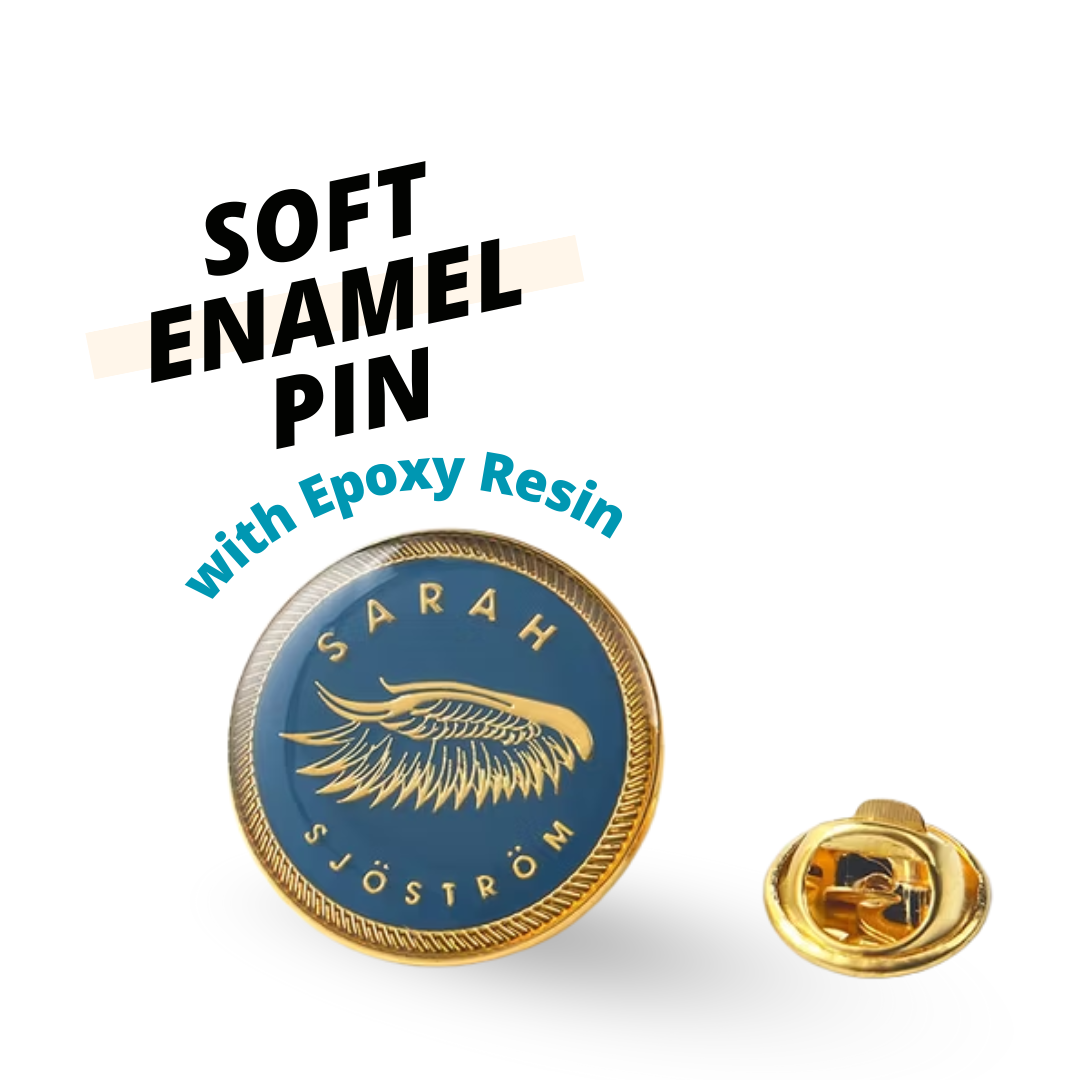What are Epoxy Pins?
Have you ever come across the terms “epoxy dome” and “epoxy pin” and wondered what they mean? You’re not alone. Many people use these terms interchangeably, but there’s a key difference.
If your design includes gradients, intricate details, or photographic images, it cannot be made as an enamel pin. Instead, the artwork is transferred onto the metal surface using offset or silkscreen printing. The epoxy dome (a clear protective resin coating) is then added to protect the print and extend the pin’s lifespan. Technically, in the industry, these are called photo dome lapel pins. However, many people commonly refer to them as epoxy pins—which is why the two terms are often confused.
1. Photo Dome Label Pin
This design includes gradients and intricate details. The design is printed onto the metal surface using offset printing. A layer of epoxy resin is then applied to protect the print and enhance durability.
2. Soft Enamel Pin with Epoxy Resin
Epoxy dome can also be applied to soft enamel pins, where the recessed areas are filled with epoxy resin. This protective layer enhances durability and gives the pin a smooth, glossy finish, similar to the feel of hard enamel pins. However, epoxy-coated soft enamel pins are less common in the industry.
As a result, the term "epoxy pins" has become widely used to refer to pins that cannot be produced using enamel techniques.
Soft enamel image with an epoxy resin. Notice the dome like appearance. ImageSource : Custom Epoxy Pin
See the Visual Difference Between a Soft Enamel Pin With & Without Epoxy
Epoxy gives soft enamel pins a smooth, glossy finish, making them look and feel more like hard enamel. VideoSource : Youtube
3. FAQs
Q1: What is the difference between epoxy pins and epoxy photodome pins?
A: Epoxy pins and epoxy photo dome pins are often used interchangeably, but they have specific differences:
Epoxy Pins: This refers to any pin with an epoxy resin coating. Epoxy can be applied to soft enamel, photo-etched, offset-printed, and silkscreen-printed pins. When applied to soft enamel pins, epoxy creates a smooth, glossy surface, similar to hard enamel.
Epoxy Photo Dome Pins: This is the industry term for pins where epoxy is applied to photo-etched, offset-printed, or silkscreen-printed pins. The epoxy forms a domed, glass-like layer that enhances durability and protects the printed design.
While epoxy pins can include both soft enamel and printed pins, epoxy photo dome pins specifically refer to printed pins with a domed epoxy layer. In the industry, when people refer to "epoxy pins," they usually mean epoxy photo dome pins.
Q2: What is the difference between Epoxy Pins VS Soft Enamel Pins?
A: The key difference lies in how the design is applied and whether epoxy is used:
Epoxy Pins: These are photo-etched, offset-printed, or silkscreen-printed pins with a layer of epoxy resin for protection. The design is printed directly onto the metal surface, and epoxy is applied to enhance durability and create a glossy finish. These pins are ideal for intricate designs, gradients, or photographic images that cannot be recreated with enamel filling.
Soft Enamel Pins: These are made by filling recessed metal areas with colored enamel, leaving raised metal lines to define the design. Epoxy can be optionally added to soft enamel pins to create a smooth, glossy finish, making them feel similar to hard enamel pins.
While epoxy pins are always coated with resin, soft enamel pins can be made with or without epoxy, depending on the desired look and texture.
Q3. Does a hard enamel pin need epoxy?
A: No, hard enamel pins do not require an epoxy coating. Hard enamel pins are polished flat during production, creating a smooth and durable surface that doesn’t need additional protection. Unlike soft enamel pins, which have recessed areas where epoxy can help add a protective layer. However, epoxy can still be added to hard enamel pins if you require an extra layer of protection.



